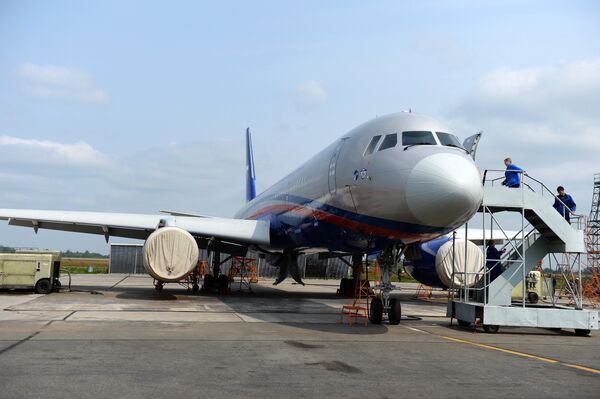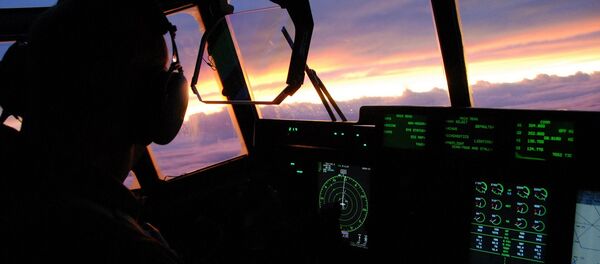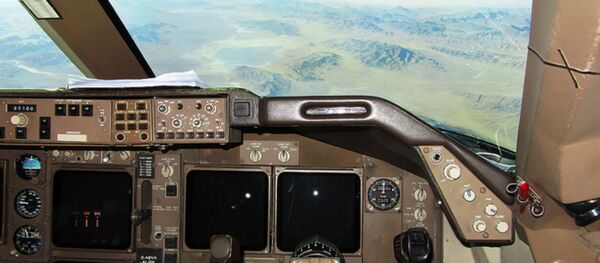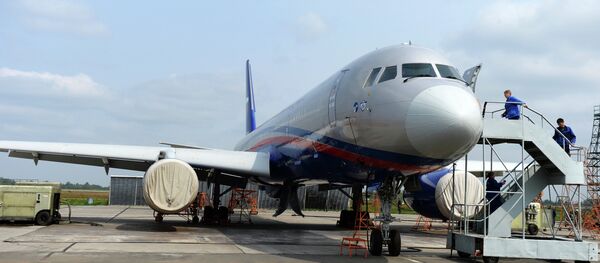US officials want Washington to deny Russia the right to observe strategic infrastructure facilities in the US from the air under the Open Skies Treaty.
At the center of their concerns is a new sensor suit installed on Tu-214OS, a special-purpose reconnaissance aircraft, used for such flights.
Some Congress and Pentagon representatives have already voiced concerns that Russia might use these flights to spy on American power plants, communications networks and other critical infrastructure.

“I cannot see why the United States would allow Russia to fly a surveillance plane with an advanced sensor over the United States to collect intelligence,” The New York Times quoted Representative Mac Thornberry, a Texas Republican who heads the House Armed Services Committee, as saying in a statement earlier in February.
His concerns are echoed by US Strategic Command (STRATCOM) Commander Adm. Cecil Haney:
“The treaty has become a critical component of Russia’s intelligence collection capability directed at the United States.” Defense One, the US defense and national security website, quotes him as saying.
Defense One, however has an answer to their concerns.
When the Treaty was first negotiated, the states involved all approved the use of panoramic and framing cameras using film, video cameras, infra-red line-scanning devices and sideways-looking synthetic aperture radar – all far less capable than what was then available to intelligence agencies, it explains.
The maximum ground resolution acceptable with treaty-approved cameras is 30 centimeters. Today, anyone can buy commercial satellite imagery with a resolution of 25 centimeters, it adds.
The website says that the Treaty has provisions to upgrade and modernize sensors. Film has long ago given way to digital imagery. Treaty members have agreed to allow a digital electro-optical sensor package upgrade, but not to allow Open Skies flights to operate so that higher resolution can be obtained.
So why doesn’t the US military add its own digital sensors, questions the website?
“Because the Pentagon dropped the ball,” it explains.
“A policy directive to proceed with the upgrade was issued in 2012, but the Defense Department didn’t issue a request for proposal until 2015, and still hasn’t chosen a contractor. The issue isn’t money – perhaps $45 million. The problem is that Open Skies flights are a very low priority for the Pentagon.”
“At a time when the Pentagon is embarked on a new $3 billion initiative to reassure European friends and allies worried about Russian belligerence, it makes sense to speed up equipping the US Open Skies plane with digital imaging capabilities, rather than to complain about the disadvantages of mutual transparency,” it furthermore states.
Russia has for years conducted unarmed observation flights over the United States, just as the United States does over Russia, as part of the Open Skies Treaty, which was signed in 1992 by both nations as well as 32 other countries at the end of the Cold War, and entered into force a decade later.
Although the treaty and the flights, unfamiliar to most Americans, amount to officially sanctioned spying, their goal has been to foster transparency about military activity and to reduce the risk of war and miscalculation, especially in Europe.
“Amid last year’s rising tensions, the US Open Skies aircraft carried out twice as many overflights as its Russian counterpart,” Defense One says.
“Moreover, complaints about the new Russian advantage under Open Skies may be overblown and are certainly misdirected. The Kremlin isn’t the culprit in this case; the Pentagon is,” it says.
Russian officials confirmed the plans to equip surveillance planes with digital hardware but cited the obsolescence of wet-film equipment as a major reason behind the decision.
“We are switching to digital equipment because nearly nobody produces wet-film equipment any longer,’ said Mikhail Ulyanov, director of the Foreign Ministry Department for Non-Proliferation and Arms Control, in an interview to RBTH.
The system, specifically designed for Open Skies flights, includes two Tu-214ON planes produced by the Vega Radio Engineering Corporation (Vega) and the United Instrument Manufacturing Corporation (UIMC), two bodies within the Russian state corporation Rostec.
However, if Russia successfully upgrades its surveillance equipment, the US risks losing its advantage in what has so far been a relatively safe way to obtain strategic intelligence.
The new equipment meets criteria for film resolution set by the Open Skies Treaty, but is less clunky than its predecessor.
"One of the advantages of the Open Skies Treaty is that information — imagery — that is taken is shared openly among all the treaty parties," she said at a joint hearing of the House Foreign Affairs and Armed Services committees back in December.
"So one of the advantages with the Open Skies Treaty is that we know exactly what the Russians are imaging, because they must share the imagery with us."







